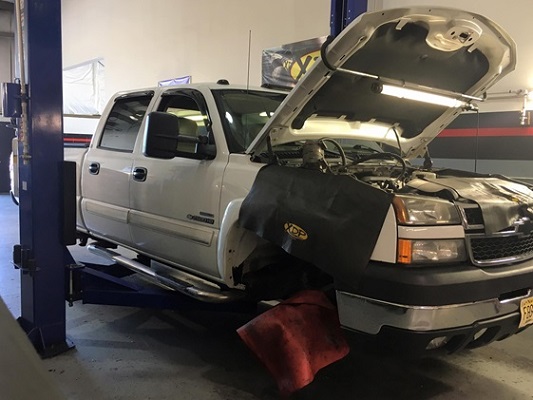With Winter around the corner, it’s time to start preparing your truck for the cold months ahead. Be prepared for the change of seasons by making sure your truck is well maintained for the colder temperatures, rain, snow, and everything else that comes along with the changes in temperature. We decided to come up with 7 Diesel Maintenance Tips to help you prepare your vehicle for the Winter.
1. LEGALLY BLIND

Be sure that your wipers are in good condition and ready for wet weather. Inspect the rubber blades closely for physical damage such as tears or cracks. If you have tried cleaning them but still see streaking on the windshield or hear a screeching sound, it’s probably time for a new pair. Switching out wiper blades yourself is a simple fix.
2. BALD IS NOT BEAUTIFUL
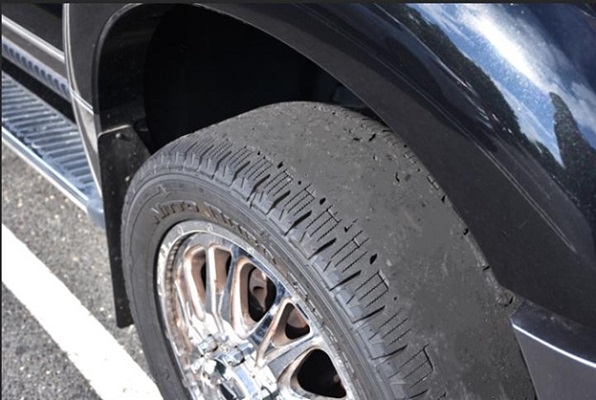
Tires are one of the most important parts of your vehicle, and one of the most neglected parts. With rainy fall days followed by snow-covered roads in the upcoming months, now is a good time to inspect your tires. There are several factors that can cause tire wear such as; driving style, alignment, worn suspension, and tire pressure.
Tread Depth –
Most performance, light truck, or medium commercial tires have built-in tread wear indicators. These are just narrow strips of smooth rubber across the tread which become more visible as the tire surface wears. You can use a penny to measure the tread depth, but for more accurate results invest in a tread depth gauge. The law may not require you to physically replace your tires until they are down to 2/32nds of tread, but tread that is too low may prevent you from safe travels, especially in rainy and slushy conditions.
Tire Pressure –
Keeping the tires properly inflated can add additional miles to their lifespan. When a tire is under-inflated, the outside edges of the tread will wear faster. When a tire is over-inflated, it can result in increased wear on the center tread. Checking the air pressure in your tires once a month can save you money in the long run. Starting in 2008 new passenger car models sold in the US were required to be equipped with TPMS (Tire Pressure Monitoring System).
Premature Wear –
An alignment that is out of spec or suspension components with excessive wear can also lead to premature tire wear. If your tires appear to be wearing abnormally fast, inspect your suspension and/or bring the vehicle in for an alignment. Another big factor is driving style. If you like to go fast around corners and have other aggressive driving habits, expect to go through tires more often.
Don’t get Deflated –
Don’t be surprised if your tires start to look a bit deflated in the fall. As the outside air temperatures drop, so does the air pressure in your tires. The tire pressure can drop about 1 psi for every 10 degrees that the outside air temp drops. Also don’t forget to check the spare tire, don’t get stranded with a spare tire that is flat!
Dry Rot –
Just because you have plenty of tread showing doesn’t necessarily mean your tires are still safe to drive on. As tires age, the rubber can start to get hard and will begin to crack or split. The standard age limit for tires in the industry is typically considered to be around 6 years.
Here is how you can check the age of your tires –
There is a Department of Transportation code or “DOT” number on the side of the tire. Most DOT numbers have between 6 and 8 letters/numbers, and then the date code follows that. Starting in the year 2000, the date code went to 4 digits, the first two are the WEEK of manufacture and the second two digits are the YEAR of manufacture. For instance, 1509 would signify the 15th week of 2009. Prior to 2000, the date code was only 3 digits, so the first two would be the week of manufacture, and the last would be the year, so without any listing of a decade, a 159 date code could either be the 15th week of 1999, 1989, or 1979. If your tire only has 3 digits – it is at least 20 years old now and is pretty well past the industry-standard age limit of 6 years.
3. A BATTERY OF TESTS

It takes a lot of power to start a diesel, which is why many larger diesel trucks have two batteries. It is normally recommended that batteries are replaced in pairs. Since it’s expensive to replace two batteries at once, you want to be sure you’re getting maximum life from them. Wait too long and you might get stranded.
Expiration Date –
Just because the warranty on a battery might be three years does not mean the battery will not survive longer. Many factors help determine when to replace the batteries in a diesel truck (or any vehicle). The first factor is the frequency of starting and duration of run time. A higher load is placed on batteries when you start the engine often, especially if the weather is cold and the running time is short. If the engine never reaches operating temperature the glow plugs will need to be heated more frequently. This can be a considerable current draw. Shorter durations of running time also means shorter periods of recharging, which could leave the batteries in an undercharged state.
Temperature –
Temperature can also be a factor in battery life. Battery output is significantly reduced in cold weather, placing a much heavier load on the batteries. Headlights, windshield wipers, front & rear defrosters, and seat heaters are used more often in the winter which increases the load. Trucks are also popular platforms for installing aftermarket equipment such as winches, accessory lights, etc. Contrary to popular belief, hot temperatures during the summer pose a greater threat to battery longevity than the freezing cold. While battery capacity is higher in the heat, high temperatures shorten overall battery life. Under the hood, a car battery can reach internal temperatures of 140 degrees or higher. This causes battery fluid to evaporate and the inside of the battery can begin to corrode and deteriorate.
Keep it clean –
Make sure you keep the battery terminals and cables clean. Dirt can act as a conductor, which drains life from the battery. Corroded terminals also increase insulation and inhibit current flow. If you have heavy corrosion on your battery terminals/cables you can use battery cleaner or baking soda and water to thoroughly clean them.
Finally, keep your battery securely fastened. Excessive vibration could damage your battery’s internal components and reduce battery life. Ditch the bungee cords and use a proper hold-down clamp.
4. LET THERE BE LIGHT
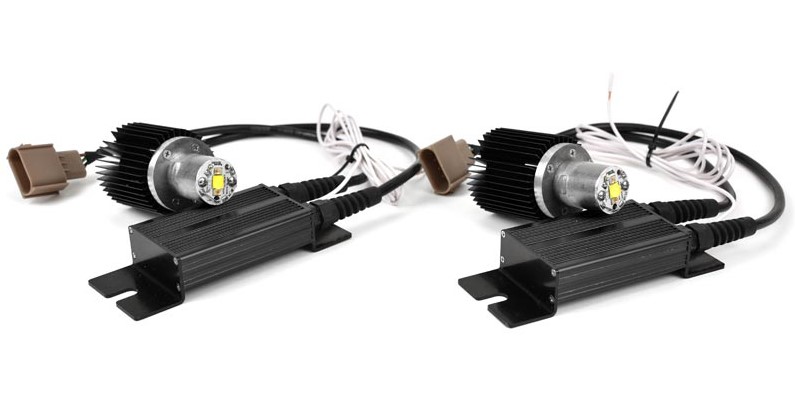
Lighting plays a critical role in safety when driving at night. Not replacing or upgrading your vehicle’s lights can be a real safety hazard. There are many different choices available in the aftermarket when it comes to upgraded lighting. A variety of new projector headlight assemblies, accessory lights, and light bars are available for late model trucks. These utilize the latest in lighting technology such as HID, LED, and OLED lights and are far superior to a factory halogen bulb. Newer lights like LED’s are brighter, more efficient, and offer a much longer life span.
Older headlight lenses can also develop a cloudy or hazy look from years of being exposed to UV light. This is more than just a cosmetic issue, as clouded lenses can compromise your vision at night and reduce the effectiveness of your headlights. When driving at night becomes difficult (or if you are just embarrassed by the way they look), think about upgrading. New projector headlights will vastly improve the lighting in your truck and can completely transform the styling of your truck.
5. MAINTENANCE, MAINTENANCE, MAINTENANCE
Trucks are pushed to work much harder than the average vehicle by carrying heavy loads, pulling large trailers, and plowing snow. Routine maintenance is extremely vital to keep your truck up and running as well as saving you money over the long run. Check the owner’s manual for regularly scheduled maintenance intervals and track your fluid & filter changes. If your truck is used in an area where the winter months are extremely frigid you may want to consider switching over to a lighter weight oil, such as 5W-40. The lower 5W viscosity grade will offer better flow at lower temperatures. Many newer diesels also use DEF (Diesel Exhaust Fluid), so don’t forget to top it off when you change your oil.
Oil Changes –
Normally you can simply look in the owner’s manual and follow the manufacturer’s recommended maintenance schedule. The oil may need to be changed in shorter intervals, depending on how you’re using your truck. If your diesel engine is worked hard on a daily basis or regularly towing/hauling heavy loads, it becomes advantageous to change the oil more frequently.
Fuel Filters –
Fuel filters should also be replaced on a routine maintenance schedule, approximately every 10-15K miles. Many newer diesel engines will have two fuel filters, a primary and a secondary. They should both be replaced at the same time for optimal cleaning. Aftermarket lift pump/fuel filtration systems are also a very popular upgrade for improved filtration and offer built-in water separation and air/vapor removal.
Engine Coolant –
Coolant is also another important maintenance item. Coolant needs to be continually monitored as it will become more acidic over time. If it’s allowed to remain acidic, it can cause corrosion on other parts of the vehicle’s cooling system, such as the radiator. Take the time to have the coolant checked and flushed on an appropriate schedule. The coolant can be checked with test strips and coolant testers to let you know where you stand. Another popular upgrade on diesel trucks is coolant filtration systems which help keep your cooling system free from debris, such as casting sand and other contaminants.
Air Filter –
The air filter should be inspected and replaced as needed. Depending on the climate and environment that you’re driving in, the air filters may need to be closely monitored. Upgrading to an aftermarket cold air intake system is a very popular modification for diesel trucks. Along with significant horsepower gains, aftermarket cold air intake kits are available with washable and reusable filters that outflow and out-filter your stock air filter.
Glow Plugs –
Glow plugs are a unique component of vehicles equipped with diesel engines. They play an important role in warming the vehicle’s cylinders during cold starts. Glow plugs typically last around 100,000 miles but if you start experiencing any of these symptoms you may want to test or replace your glow plugs –
- Engine Misfire
- Decrease in Power and Acceleration
- Hard Starting in Cold Weather
- Excess Smoke from the Exhaust
It is typically recommended that glow plugs are replaced as a full set.
6. DON’T FORGET TO ADD THE ADDITIVES
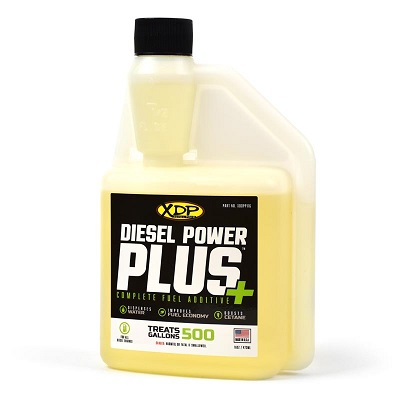
There are many reasons why you should consider adding a fuel additive every time you fill the tank on your diesel engine. Increasing the Cetane helps improve your engine performance, reduce emissions, and cleans your fuel injection system. In addition, it will disperse water and prevent the formation of algae/bacteria in the tank. A single bottle of XDP Diesel Power Plus treats 500 gallons of diesel fuel!
If you live in a colder climate, switch over to a winter formula when the temps are below freezing. The diesel fuel in your tank will start to gel and freeze up when exposed to very low temperatures during the winter. This can lead to the fuel filter getting plugged up with ice and wax or worst-case scenario the waxy diesel fuel can actually do damage to your engine. Diesel fuel additives such as XDP Polar-D are the ideal solution to these cold-weather issues.
7. CLEAN, RINSE, REPEAT
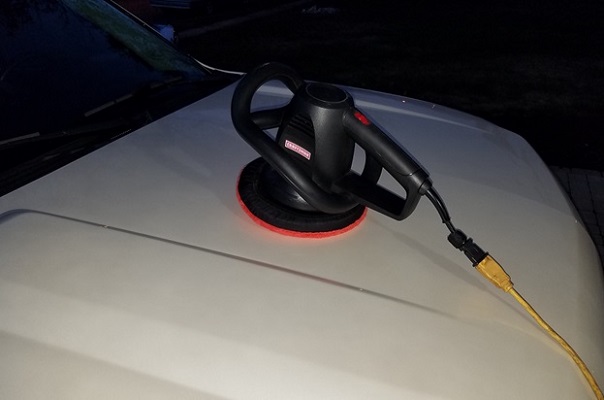
Fall is a great time to clean your vehicle to prepare it for the winter. If you’re not the type of person that waxes their vehicle every two-three months we highly recommend a thorough detailing/waxing in the fall and spring. This is especially important if you live in a region of the country that gets snow accumulation. A good coating of wax will help protect your paint from the harsh winter environment and salt on the roads.
Exterior & Undercarriage –
If you don’t have access to running water to wash your vehicle by hand in the middle of the winter, this is the time to splurge and take your vehicle to the car wash. If your truck or tires are too big for an automated car wash, look for a self-serve wash and make sure you rinse the undercarriage! Once spring starts and the weather starts to warm up, take out that soap and water and give your vehicle a good cleaning and then another coat of wax. This will help remove any remaining salt and help protect it for the hot summer.
Don’t forget to clean the undercarriage again; just because you can’t see it doesn’t mean it doesn’t need to be cleaned. Pickup trucks especially are notorious for rust in the rocker panels and bedsides/wheel wells. Regular cleaning and maintenance to remove salt and mud can help prevent your truck from suffering from these common cosmetic and structural issues. If you live in a cold region and routinely subject your truck to road salt you may also want to invest in a rust proofing or rust inhibitor on the undercarriage to prevent rust.
Protect the Interior –
Protect your interior by replacing your standard floor mats with a quality set of floor liners and help prevent the usual long-term damage to the carpet caused by slush, dirt, and sand. If you have leather seats it is a good idea to condition them as well. A leather conditioner can help prevent the leather from drying out and cracking/splitting over time.
Of course, some of these tips will not apply to everyone; you may not live in a region that the temperatures dip down below freezing and your vehicle gets subjected to salt-covered roads. Most newer trucks (especially diesels) are expensive vehicles to purchase whether it is new or used. Whether you are only planning on keeping the truck for 2-3 years or if you never plan on selling it, it is a good idea to protect your investment. A little extra time and elbow grease can help ensure your truck remains looking and performing just like new.

